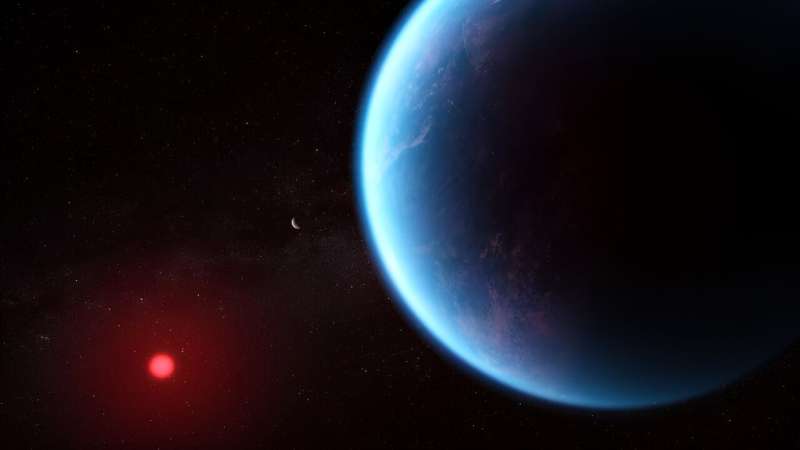This article has been reviewed according to Science X's editorial process and policies. Editors have highlighted the following attributes while ensuring the content's credibility:
fact-checked
trusted source
proofread
If Hycean worlds really exist, what are their oceans like?

Astronomers have been on the hunt for a new kind of exoplanet in recent years—one especially suited for habitability. They're called Hycean worlds, and they're characterized by vast liquid water oceans and thick hydrogen-rich atmospheres. The name was coined in 2021 by Cambridge astronomer Nikku Madhusudhan, whose team got a close-up look at one possible Hycean world, K2-18b, using the James Webb Space Telescope in 2023.
In a paper newly accepted for publication this January by the Monthly Notices of the Royal Astronomical Society, Madhusudhan and co-author Frances Rigby examined what the internal structure of Hycean planets might look like, and what that means for the possibility of finding life within. The paper can be accessed on the arXiv preprint server.
Hycean worlds are unlike anything we have seen in our own solar system, expanding the very definition of a habitable planet. They tend to be much bigger than Earth-like planets, earning them the moniker "mini-neptunes." Their size makes them easier to detect than smaller rocky worlds, and their thick atmospheres give them a wider habitable zone.
Those same properties also make them ideal candidates for spectroscopic analysis, where measuring the chemical composition of the atmospheres might reveal biosignatures.
In order to tease out the potential characteristics of a habitable Hycean world, Rigby and Madhusudhan used a modeling tool called HyRIS to map out possible planetary structures. They limited their models to only allow for habitable temperatures and pressures at the ocean's surface, where the water meets the air.
Even with those strict conditions in place, the results showed a wide variety of possible internal structures. The ocean depths of a habitable Hycean world could range from 10s of kilometers deep to 1,000s of kilometers (for comparison, Earth's ocean averages about 3.7km deep).
One factor that potentially limits the habitability of these worlds is that they are likely to have a thick layer of ice between the ocean floor and the rocky core of the planet. On Earth, the weathering of the rocky seafloor produces nutrients that are essential to life—ice might inhibit that process. Nonetheless, there is still the possibility that these nutrients could be transported through the ice via convection, or delivered to the planet in other ways, like via comet and asteroid impacts or atmospheric condensation.
The study also looked at several real Hycean world candidates, and among them, there are three that stand out as having good chances of habitability.
Although these three candidates orbit red dwarf stars—known for their violent, hostile solar flares—these planets' stars are comparatively calm. They are TOI-270 d, TOI 1468 c, and TOI-732 c (TOI refers to planets observed by the TESS space telescope).
Each of these three planets is scheduled for observation by James Webb in its second year of observing, meaning we're about to get a more detailed look at some exciting new exoplanets. Last year's observation of K2-18b was just the beginning of Hycean world research, and this recent paper will help astronomers constrain the possible internal structures of these worlds, and help determine the prospect of finding life on them.
More information: Frances E. Rigby et al, On the Ocean Conditions of Hycean Worlds, arXiv (2024). DOI: 10.48550/arxiv.2402.12330
Provided by Universe Today





















